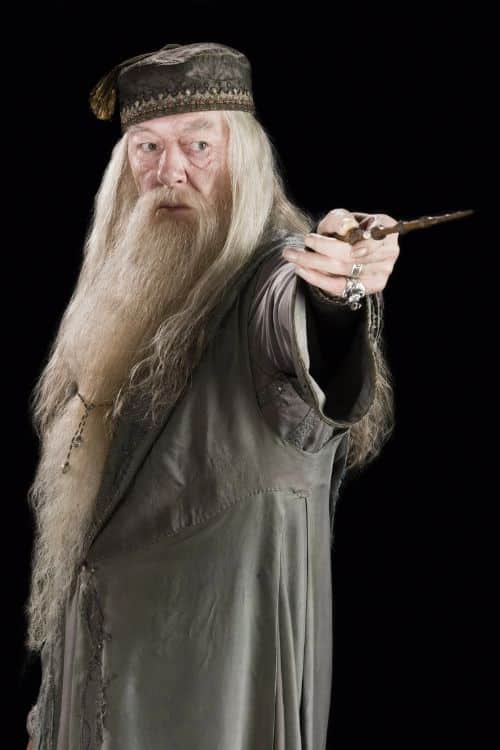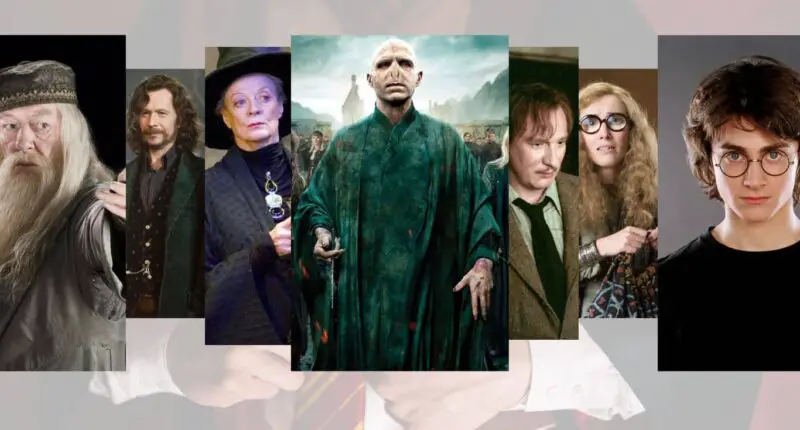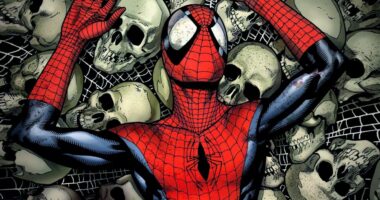Harry Potter Characters who are Inspired by Mythology: The Harry Potter movies and books introduced society to a magical realm coexisting with the human world commonly known as muggles. The Wizarding World is teeming with mythical creatures and in-universe lore, yet it’s also full of references to myths from other cultures like the Greek, Norse, and Slavic. Many of the characters in Harry Potter are straight out of myth and legend, either because it is obvious from their names or because of the way they behave. The historical, literary, and mythological allusions that may be found in the Wizarding World are far more numerous than what is shown here.
Harry Potter Characters who are Inspired by Mythology
Remus Lupin

Remus Lupin, who makes an amazing magical debut in Harry Potter and the Prisoner of Azkaban, has several linked mythological links. The roving werewolf works as a Defense Against the Dark Arts professor at Hogwarts while also serving as the organization’s new commander. His first name is reminiscent of the fabled wolf mother who fed and nurtured Romulus and Remus, the twins who are credited with founding Rome. His last name, which derives from the Latin Lupinus for “wolf,” emphasizes the allusion. According to tradition, Romulus and Remus’s cave where they resided with their wolf mother was known as the Lupercal.
Fenrir Greyback

Fenrir Greyback stands in stark contrast to Remus Lupin, a regretful werewolf. Greyback, who enjoys his lycanthropy and is bloodthirsty and cruel, keeps a hideous manner and appearance all the time. The Norse god Loki, who is very different from Marvel’s Loki, is the father of Fenrir, a gigantic, monstrous wolf. The theories regarding Ragnarök, the Norse doomsday, and the demise of the gods, largely feature Fenrir. In the same way that Greyback eludes arrest by the Aurors in the Wizarding World, the Norseman Fenrir is imprisoned in vain because it is predicted that he would break free and take part in Ragnarök’s chaos.
Merope Gaunt

Lord Voldemort’s mother experienced a lot of hardship. She convinced Tom Riddle, a muggle she adored, to marry her in an effort to get away from her controlling father. Riddle left her pregnant with nothing when the effects of the love potion faded off, and she passed away shortly after. The Greek mythological equivalent of Merope Gaunt is more than just a name. Merope was the sole member of the Pleiades, the Titan Atlas’s daughters, who wed a mortal. Some traditions claim that Merope shone less brightly than the other seven Pleiades when they became stars as a result of her marriage, covering her face in shame. Merope Gaunt’s kid would one day strive to achieve what her husband Sisyphus, who was severely punished by the gods for deceiving Death repeatedly, accomplished.
Pomona Sprout

Herbology teacher and Hufflepuff House leader Professor Pomona Sprout got her first name from a Roman myth. Pomona was a goddess of profusion, fruitfulness, and orchards. Pomona was a favorite subject of pre-Raphaelite and Renaissance artists as well as ancient writers like Ovid. She was more of a fruit tree deity than a harvest goddess like the Greek Demeter as well as other nature spirits. Similar to this, Pomona Sprout runs a sizable greenhouse at Hogwarts and instructs students on how to care for and understand the characteristics of magical plant life.
Sirius Black

Sirius Black, a beloved Harry Potter figure who goes by the nicknames Padfoot, the Grim, and sometimes even Snuffles, is an Animagus who acquires the appearance of a big black dog. Sirius refers to a wealth of dog folklore and is named after a star in the constellation Canis Major, which stands for the dogs of Orion, a Greek Mythological Hunter. All around England, there are legends about menacing black hounds. There are legends of Padfoot, a black dog that strolls lightly by a person in West Yorkshire, portending their impending demise. A black dog is said to guard churchyards against bad spirits and malevolent people in widespread Church Grim legend. Thought Catalog lists the scary Black Shuck as well as the ethereal Barghest as further variants. Similar to Sirius, black dogs are feared, yet in some variations, they serve as devoted guardians.
Minerva McGonagall

The Deputy Headmistress and longtime Transfiguration teacher at Hogwarts are known simply by her first name. The Roman version of the Greek goddess Athena, Minerva is known as the goddess of war and knowledge. Professor McGonagall’s role as the leader of Gryffindor House, which is home to Hogwarts’ bravest pupils, suggests the connection to conflict, but Athena is much more than a goddess of war. She is a master of various skills, including weaving, and she is Athens’ patron and benefactor. The olive, which provided food, and riches, as well as a symbol of peace, was given to humanity by Athena. Despite appearing to be harsh, McGonagall acts as both a counselor and a strong protector for her students. One of the most insightful witches in the Harry Potter films, McGonagall frequently provides guidance, counsel, or a call to action. Like Athena, McGonagall marshals the armies of Hogwarts in combat when the moment is right.
Sybill Trelawney

Sybill Trelawney demonstrates true sight at crucial points in the Harry Potter series, even though her forecasting usually resembles charlatanism. She gives the forecast in a trance-like state that prompts Lord Voldemort to attack young Harry, and in The Prisoner of Azkaban, she foretells Wormtail’s returning to Voldemort’s side. Trelawney’s first name is a play on a Greek title given to prophetesses or oracles in antiquity. According to Atlas Obscura, the well-known sibyl at Delphi would ingest fumes to create a hysteria from which she would speak the predictions of Apollo. The texts also say that Cassandra, Professor Trelawney’s ancestor, was a well-known seer. When Cassandra, a Trojan prophetess, and princess, turned down Apollo’s advances, she was cursed to have her prophecies belittled.
Voldemort

The demonic Lord Voldemort, also known as Tom Riddle, is only interested in immortality. The French translation of his given name is “escape from death.” His political ambition and ascent to power are reminiscent of past autocrats like Adolf Hitler, but his unwavering pursuit of immortality is reminiscent of a Slavic folk hero who has the capacity to defeat death. Koschei the Deathless, as per Ancient Origins, is a common villain in Russian folklore and fairy tales that feature young heroes. Koschei maintains his immortality through a peculiar ritual where he uses a magic spell to conceal his soul within a needle, which he places inside a chest, inside an egg, a rabbit, and a duck, which he buries on a secluded island. Voldemort’s conception of Horcruxes, which contains pieces of the soul outside the body, is reminiscent of this complicated procedure.
Dumbledore

Albus Dumbledore, the headmaster of Hogwarts and often regarded as the most potent wizard in the Harry Potter series, is a committed combatant of the Dark Arts. Dumbledore’s past is more sinister than he lets on, despite the impeccable reputation he acquires with age. He draws inspiration from the mythical character Merlin, a magician, and adviser to King Arthur. Since Merlin’s father had been an incubus, his demon ancestry gave him access to magic. Dumbledore experienced shame over his family and previous relationships, much like Merlin does. However, both move over their undesirable beginnings and develop into dependable role models for youngsters. Potter and Arthur are guided by Dumbledore and Merlin into adulthood, where they help mold the boys into kind, competent leaders.
Harry Potter

Numerous literary and mythological parallels exist with The Boy Who Lived. He is simultaneously a Christ figure, a legendary hero in the mold of Heracles and Theseus, among other things. But King Arthur might be the most appropriate historical analog for Harry Potter. Harry and Arthur both come from wealthy families, but they grow up far from home and are clueless about their true lineage. In order to demonstrate his membership in Gryffindor, Harry first takes the Sword of Gryffindor from the Sorting Hat, which he subsequently finds at the bottom of a lake. After establishing his title to the throne by drawing the sword from a stone, Arthur is given Excalibur by the Lady of the Lake. In addition, Arthur weds Guinevere, whilst Harry weds Ginny Weasley, whose full name is Ginevra, the Italian version for Guinevere.
Also Read: 10 Strongest Human Characters in DC Comics



